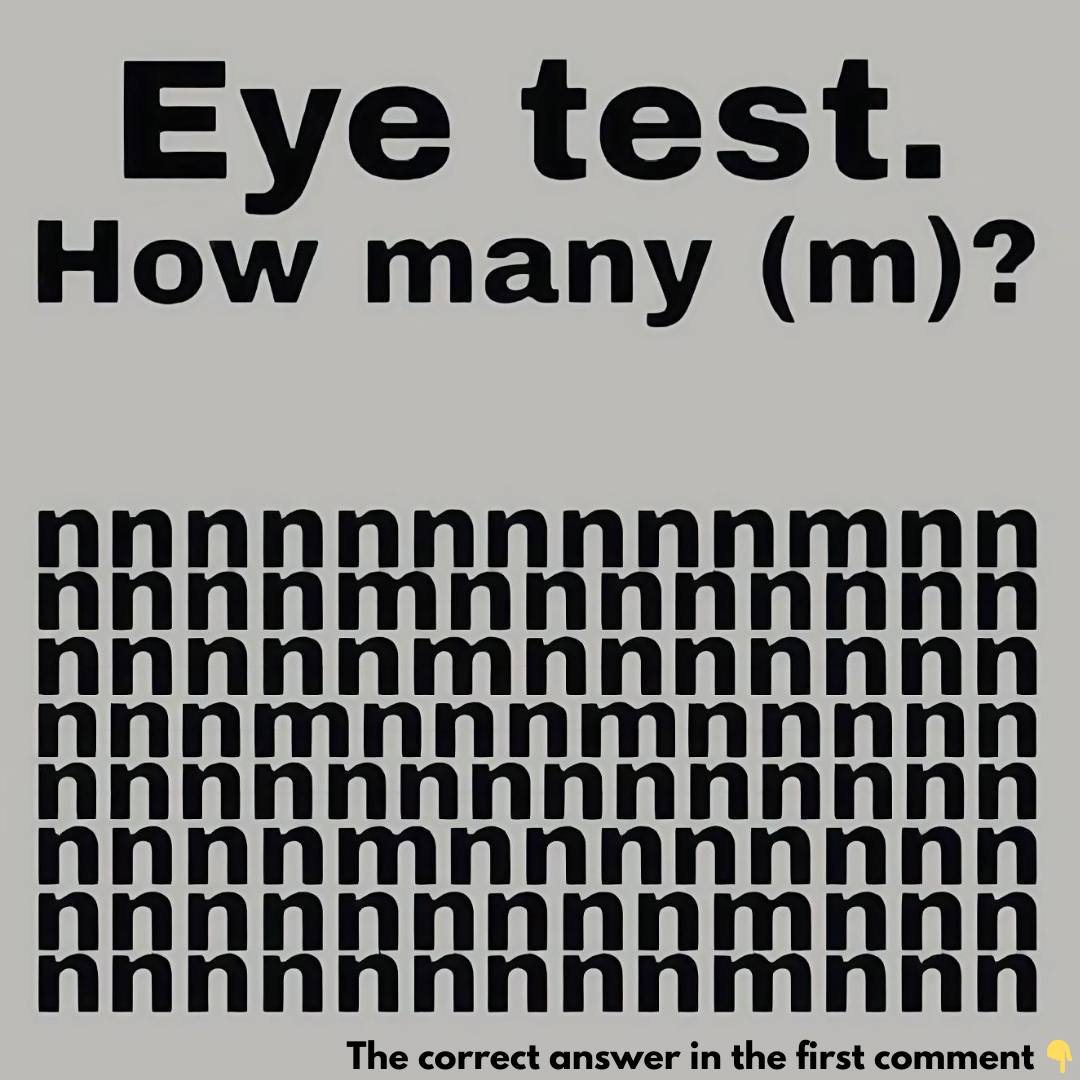In our fast-paced digital world, it’s easy to miss the finer details in the rush of daily life. But a viral optical illusion has recently captivated the internet, challenging viewers to find a hidden letter ‘M’ among a sea of ‘N’s. This seemingly simple brainteaser has proven to be far trickier than it appears, leaving millions questioning their visual acuity and perception.

The concept is straightforward: rows and rows of the letter ‘N’ are arranged in a grid, with a single letter ‘M’ cleverly hidden somewhere within. At first glance, the task seems simple enough. How hard can it be to pick out one letter among the others? But as countless people have discovered, spotting the elusive ‘M’ is anything but easy. The ‘M’ is so seamlessly camouflaged within the pattern of ‘N’s that it almost disappears, leaving viewers squinting at their screens in frustration as they try to locate it.
This optical illusion is far from random. It has been meticulously designed to trick the brain. The similarity between the letters ‘M’ and ‘N’ is what makes this puzzle so challenging. Both characters share vertical lines and diagonal strokes, but the ‘M’ has an extra diagonal line that sets it apart. When placed among a grid of identical-looking ‘N’s, this small distinction becomes incredibly difficult to spot, especially when the letters are displayed in a uniform, bold typeface on a white background.
The illusion first gained popularity when it was shared on the Twitter account “Non-aesthetic Things.” Since its debut, the puzzle has taken the internet by storm, racking up over 27 million views and sparking a flurry of discussion and debate. People from around the globe have joined in, each determined to find the hidden letter. Social media platforms are filled with comments, guesses, and even friendly arguments as users compare their results, eager to prove their perceptual prowess.
So, how many ‘M’s are hidden in the image? The answer may surprise you: there are 10 in total. Two of them are embedded in the question itself, while the remaining eight are scattered across the rows of ‘N’s. Many people confidently report finding fewer than 10, only to be astonished when the true count is revealed. The challenge doesn’t just end with spotting one ‘M’; locating all 10 requires sharp focus and attention to detail.
Optical illusions like this one are more than just fun distractions—they offer a fascinating glimpse into how our brains interpret visual information. They reveal how easily we can be deceived by patterns and how our perception of reality can differ from the actual truth. The difficulty in identifying the hidden ‘M’s underscores the importance of slowing down and taking a closer look, reminding us that what we see at first glance might not always be the whole picture.
Beyond entertainment, illusions like this provide valuable insights into human cognition and visual processing. By studying how these illusions trick our minds, we gain a deeper understanding of the complexities of perception and the limitations of our senses. Engaging with puzzles like these can also sharpen our mental faculties, improving our ability to notice subtle differences and enhancing overall cognitive agility. In a way, these challenges serve as mental workouts, keeping our minds sharp and focused.
Whether you managed to find all 10 ‘M’s or only a few, this optical illusion highlights the importance of paying attention to the small details. The next time you encounter a similar puzzle, embrace the challenge—it’s more than just a fun way to pass the time. It’s an opportunity to better understand how your brain works and to appreciate the remarkable ways in which we perceive the world around us.
At its core, the viral hidden ‘M’ illusion is more than just a game. It’s a testament to the incredible capabilities of human perception and the fascinating, sometimes deceptive, ways our brains process information. As we explore the world of optical illusions, we gain a greater appreciation for the intricate balance between what we see and what we think we see. These puzzles challenge us to question our assumptions and explore the limits of our perception.
So, the next time you come across an optical illusion, take a moment to engage with it. Whether you succeed in solving it immediately or spend a little more time deciphering it, the journey itself is worth it. These illusions not only entertain us but also offer valuable insights into the workings of our minds. And who knows? You might just discover something new about how your brain interprets the world, one hidden ‘M’ at a time.





